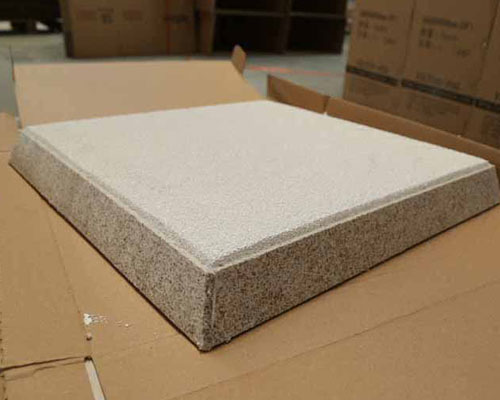Ceramic Filter for Molten Aluminum Filtration can remove inclusions from molten aluminum. Foam ceramic filtration technology has become the main filtration method for commercial aluminum alloys all over the world. Due to its low installation and operating costs and ease of use, the technology has rapidly expanded to aluminum foundries of various types and levels of complexity.
Molten aluminum must usually be filtered before casting. The filtration process removes particles that may cause substandard final products. Traditionally, a ceramic disc type aluminum melting Foundry Filter is used.
Ceramic foam filters play a vital role in metal casting and foundry industries. They are used to filter impurities in molten metal to improve the quality and performance of the final product.
Ceramic Filter for Molten Aluminum Filtration purifies molten aluminum outside the furnace, which is an effective method to improve the cleanliness of molten aluminum. The ceramic filtering process can effectively remove various inclusions in the molten aluminum with a fineness of micrometers, reduce the influence of inclusions on the quality of cast-rolled billets, and provide a basic guarantee for obtaining high-quality cast-rolled billets.
The clean quality of the ceramic filter plate to the molten aluminum is directly related to the amount of molten aluminum filtered by the ceramic filter plate. Therefore, in order to be able to process high-quality ultra-thin aluminum foil, the clean aluminum liquid must be used to produce the cast-rolled billet.
Ceramic Filter can reduce gas and inclusions that are contained in the casting, reduce the turbulence level of molten metal when filling the mold, reduce surface defects in castings, and significantly reduce the rejection rate of casting. It also can increase the compressive sealing of casting, increase elongation and tensile strength of casting, improved surface finish of casting, improve the mobility of molten metal, increase the filling capacity, and the feeding capacity of melt.

